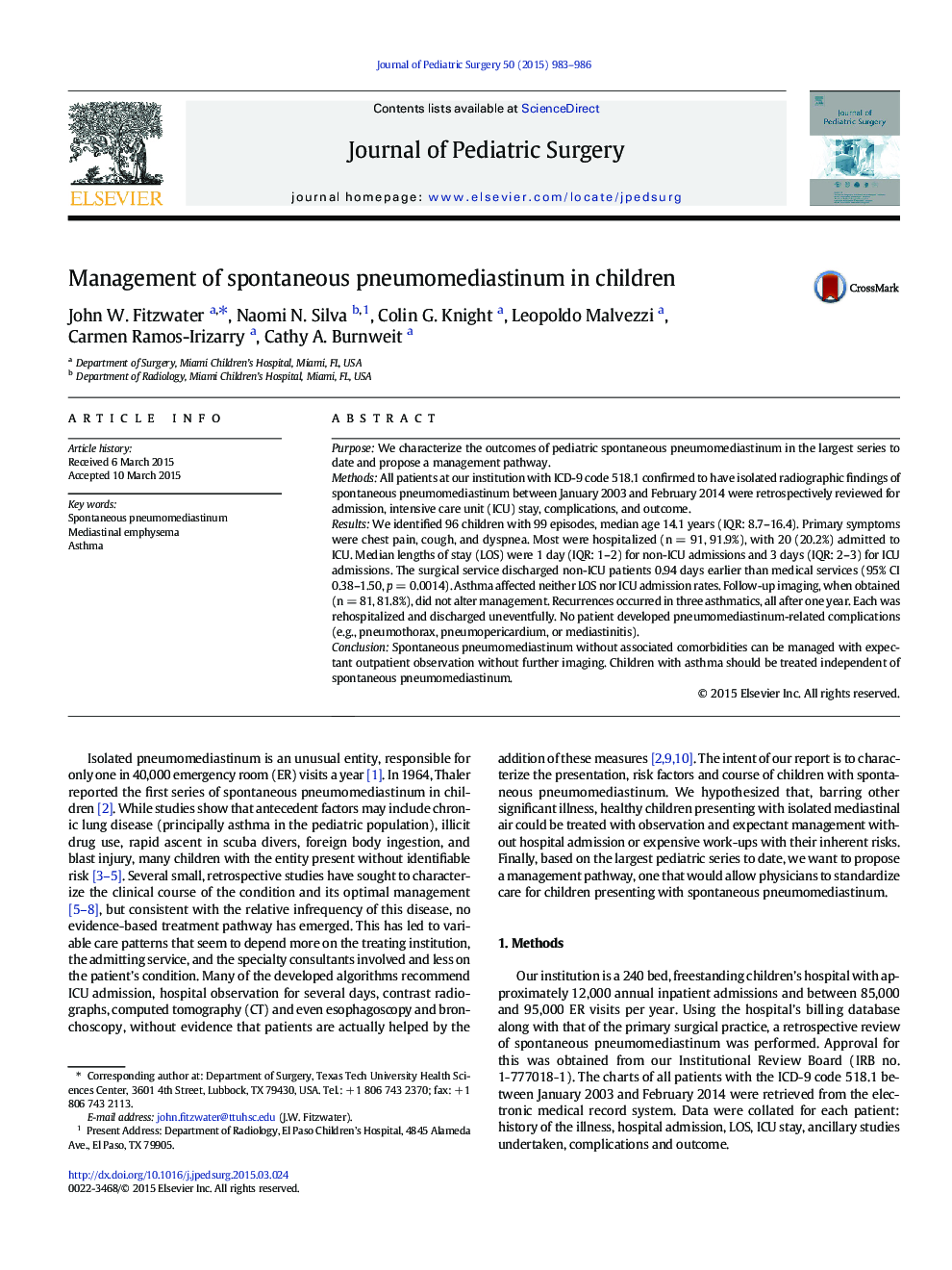| Article ID | Journal | Published Year | Pages | File Type |
|---|---|---|---|---|
| 4155050 | Journal of Pediatric Surgery | 2015 | 4 Pages |
PurposeWe characterize the outcomes of pediatric spontaneous pneumomediastinum in the largest series to date and propose a management pathway.MethodsAll patients at our institution with ICD-9 code 518.1 confirmed to have isolated radiographic findings of spontaneous pneumomediastinum between January 2003 and February 2014 were retrospectively reviewed for admission, intensive care unit (ICU) stay, complications, and outcome.ResultsWe identified 96 children with 99 episodes, median age 14.1 years (IQR: 8.7–16.4). Primary symptoms were chest pain, cough, and dyspnea. Most were hospitalized (n = 91, 91.9%), with 20 (20.2%) admitted to ICU. Median lengths of stay (LOS) were 1 day (IQR: 1–2) for non-ICU admissions and 3 days (IQR: 2–3) for ICU admissions. The surgical service discharged non-ICU patients 0.94 days earlier than medical services (95% CI 0.38–1.50, p = 0.0014). Asthma affected neither LOS nor ICU admission rates. Follow-up imaging, when obtained (n = 81, 81.8%), did not alter management. Recurrences occurred in three asthmatics, all after one year. Each was rehospitalized and discharged uneventfully. No patient developed pneumomediastinum-related complications (e.g., pneumothorax, pneumopericardium, or mediastinitis).ConclusionSpontaneous pneumomediastinum without associated comorbidities can be managed with expectant outpatient observation without further imaging. Children with asthma should be treated independent of spontaneous pneumomediastinum.
